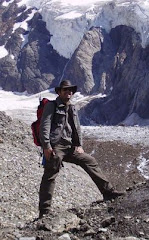The german author, poet, politician and artist Johann Wolfgang Goethe (1749-1832) was also strongly interested in natural sciences, and so with geological and paleontological questions. One of his extensively studied subjects laid just for his front door, or better: under it, and also under his house and part of the city he was living since 1775, Weimar, a beautiful city located in the german Bundesland of Thuringia. Here the travertine found in the underground was used extensively as building stone and for industrial use, and was exploited since the 12th century.
Goethe was an enthusiastic collector of mineralogical, paleontological and geological, curiosities and between 1780 until 1832 he collected, exchanged and buyed at last 18.000 pieces of rocks, minerals and fossils.
Fossils comprise 718 examples, most notable are samples of the quaternary travertine of Weimar and surrounding area, with over 100 single specimens showing a large variety of plant and animal fossils. Animal fossils comprise fragments of tusks and molars of the interglacial woodland elephant Palaeloxodon antiquus, pieces of the jawbone and teeth’s of the woolly rhinoceros Dicerorhinus kirchbergensis, bones and teeth’s of the ice age bison Bison priscus mediator, also from horse (Equus taubachensis), brown bear (Ursus arctos) and antler fragments of deer (Cervus elaphus). An exceptionally fossil discovery is a petrified egg from a crane (Grus grus).
The determination and description of the fossil plants were achieved by Kaspar Graf von Sternberg (1761-1838), founder of modern paleobotany and a good friend of Goethe.
Goethe dealt with the idea to publish his observations of some of the discoveries. On 8. January 1819 he wrote to the editor and geologist Carl Caesar von Leonhard (1779-1862):
„We discovered in the vicinity of Weimar exquisite fossil bones: a half jawbone with teeth’s, similar to the Paläotherium, with remains of elephants, deer, horse and other animals that can found together.“ Unfortunately this paper never was written.
 Stephanorhinus (Dicerorhinus) kirchbergensis
Stephanorhinus (Dicerorhinus) kirchbergensis Equus taubachensis
Equus taubachensis Cervus elaphus
Cervus elaphusIn 1821 the amateur geologist Christien Kieferstein (1784-1866) contacted him asking about in formations about the outcrops of this lithology. But at this moment Goethe was not able or willing to give further notices to him. Only two years later, after contacting the son of Goethe, August Goethe, Kieferstein received a stratigraphic description and some samples of the travertine. The young man visited during the 8. and 11. August 1823 the “tuffaceous caves out of the city limits”, collected samples and described exactly the found layers and corresponding lithology – sending the notes the very same day to Kieferstein. Goethe returned to Weimar in September, and now together with his son returned to the quarry and corrected the previously drawn stratigraphic column.
August intended to publish these observations; unfortunately his early death in 1830 prevented this intention.
"Stratigraphic column of a quarry, circa 10 min south of Weimar and just right of lake Chau after Belvedere", redrawn after Goethe 1823 (from STEINER 1996):

Symbology
1. Numbering of layers
2. plant imprints (mostly stems)
3. molluscs and mammal remains in travertine
4. compact travertine layers
5. brittle travertine layers
6. Chara and bryophyte travertines
7. mammal remains
8. molluscs
9. plant stems
10. silt
11. sand
12. solifluction horizont with pebbles
13. recent soil
The generalized stratygraphy after modern considerations:
The basis of the Succession is composed of a cemented conglomerate with crystalline and carbonatic pebbles ranging between centimetres to decimetres in diameter. This coarse river deposit is overlain by brownish to yellowish stratified silt and sand layers, interpreted as alluvial depositions. Then follows the “lower travertine“, an alternation of compact yellow with brittle travertine, also the lower part of the Eemian Ehringsdorf-Formation.
The lower travertine is separated from the upper by the so called “Pariser”, the name derives from the description by the botanist Dr. Herbst in 1860 as “Poröser Kalktuff”, meaning simply “porous calc tuff”. In the quarry it is recognizable as brown, loamy stratum that contains rare bones and teeth from small vertebrates. The “upper travertine” is similar to the lower, but differs in a gently greyish color and the presence of various pedogenetic horizons’ (“Pseudopariser”).
But still four handwritten exemplars are conserved today at the Goethe and Schiller archive in Weimar, they were used in the 20th century for the stratigraphic correlation between modern drill campaigns and old, today lost, quarry outcrops.
 Bone fragment in the travertine of Ehringsdorf, a small village with the last active quarrys in the surroundings of Weimar.
Bone fragment in the travertine of Ehringsdorf, a small village with the last active quarrys in the surroundings of Weimar. Fauna of the interglacial travertine (180.000 to 200.000 years old).
Fauna of the interglacial travertine (180.000 to 200.000 years old).References:
STEINER, W. (1996): Die Parkhöhle von Weimar. Abwasserstollen, Luftschutzkeller, Untertagemuseum. Stiftung Weimarer Klassik.





Keine Kommentare:
Kommentar veröffentlichen